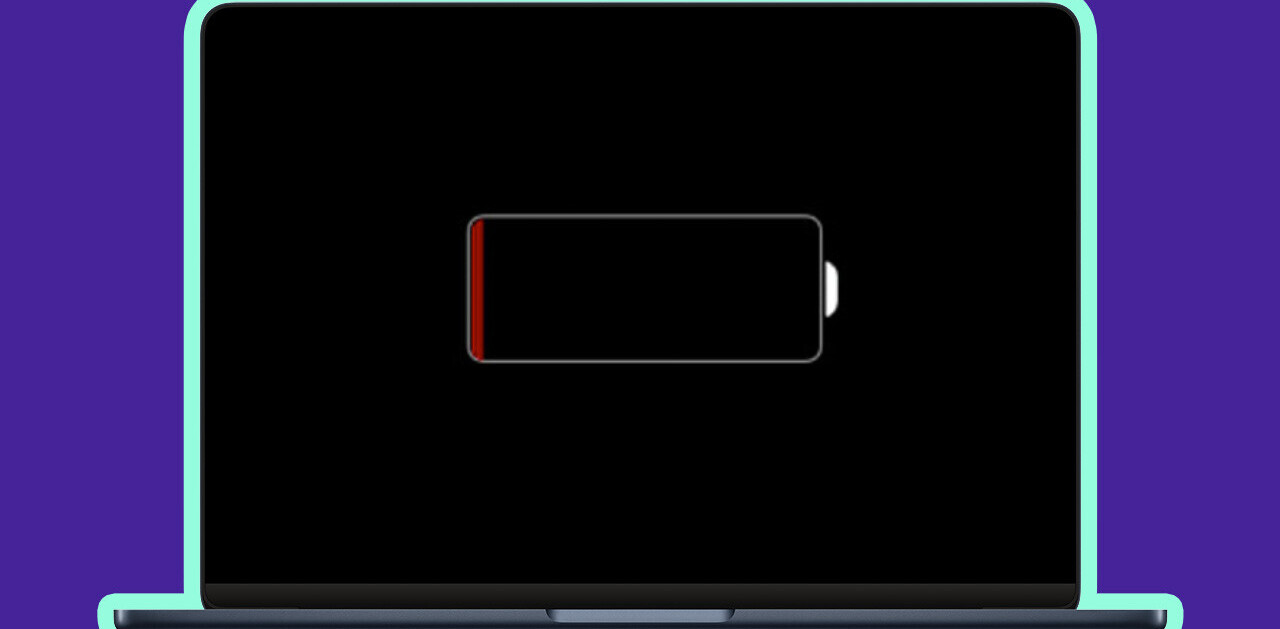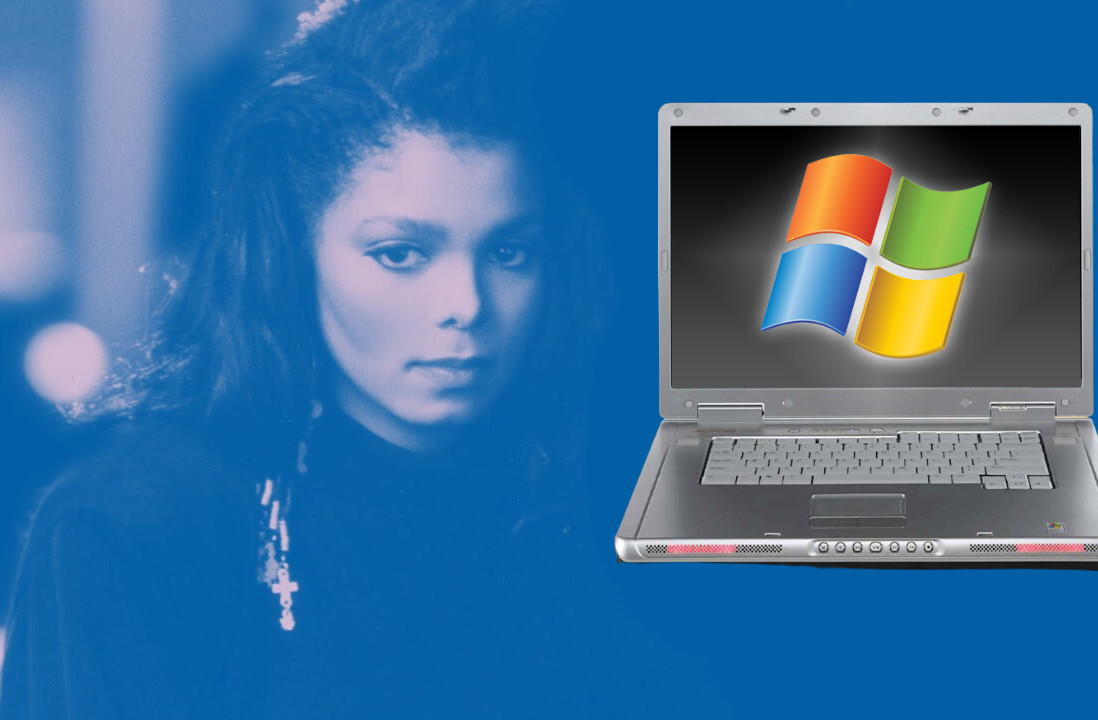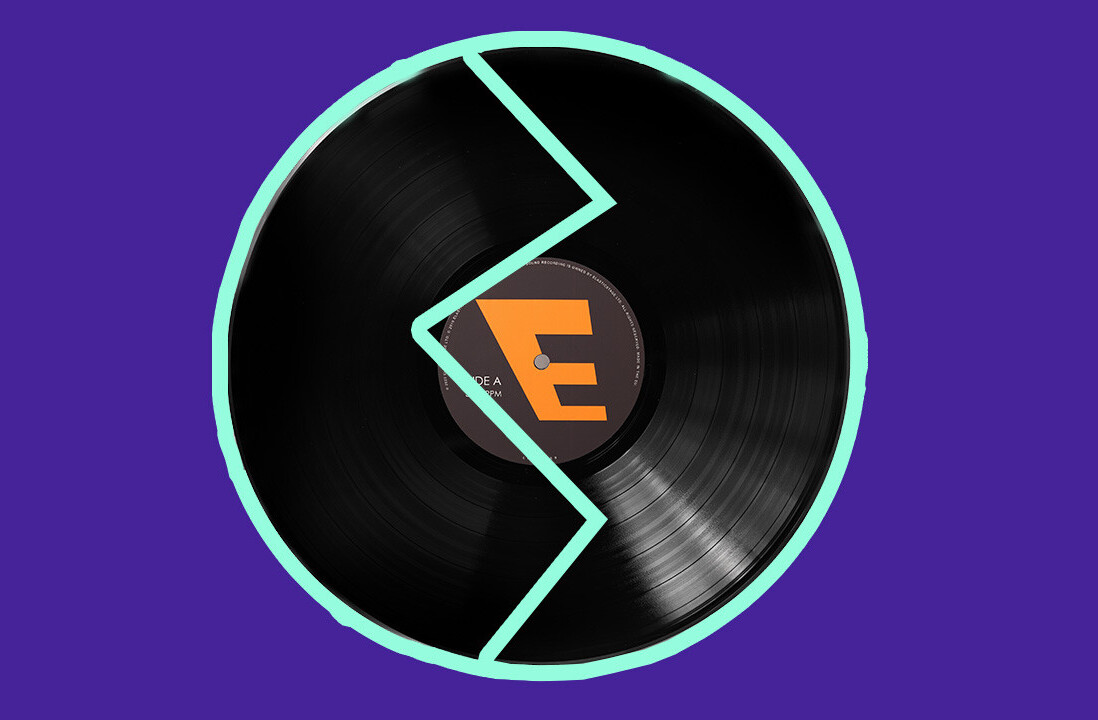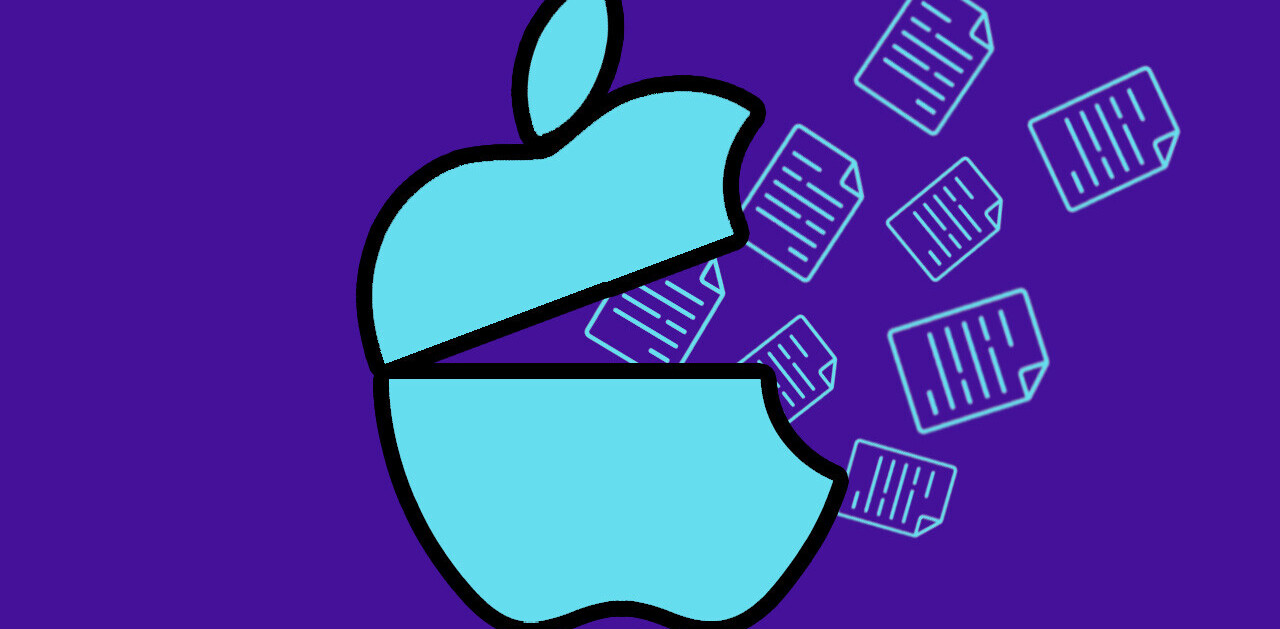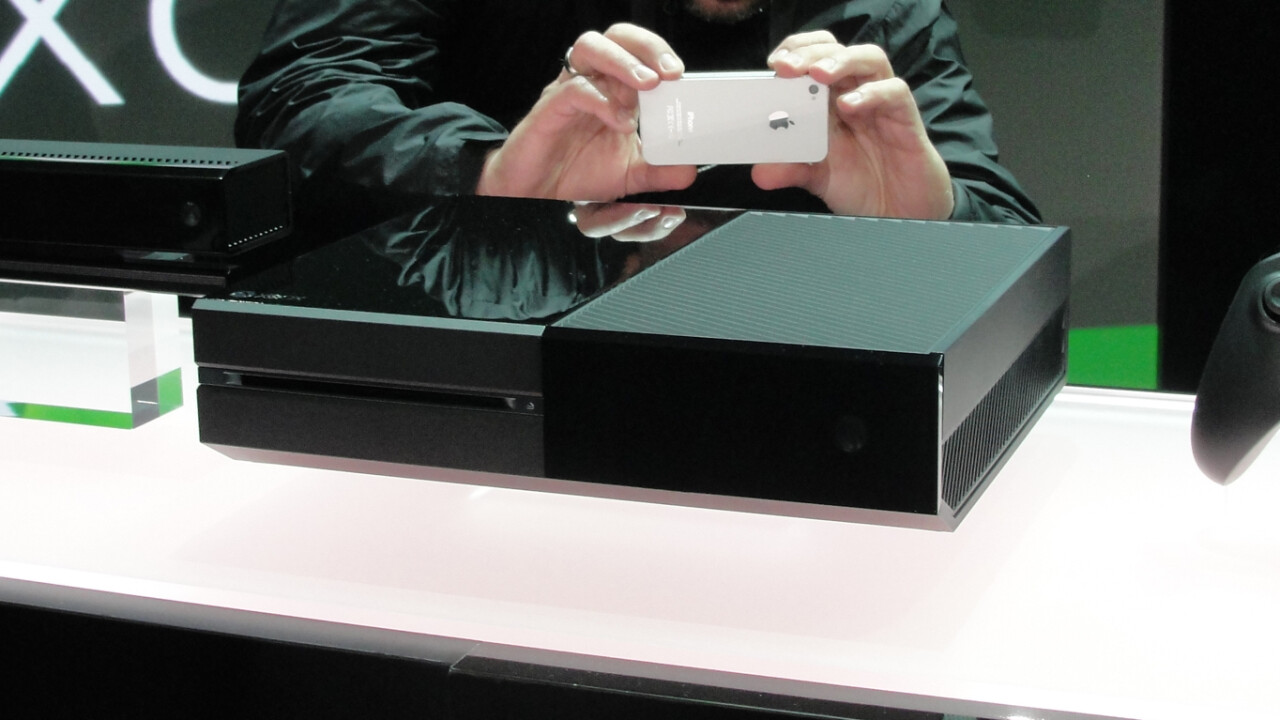
2013 seemed like the year of breakthrough gadgets. Not only did we see a number of crazy new form factors hit the mainstream, crowdfunding services like Indiegogo and Kickstarter ushered in a new type of gadget that was created by the people, for the people.
These are the devices we loved and have changed our lives.
Quantified self
The quantified self movement took off in 2013 with a wide range of new devices emerging and whole ecosystems developing around them. Since the introduction of Bluetooth Low Energy, they’ve been able to thrive and it seems like almost everyone wants to have that prized spot on your wrist.
Winner: Fitbit Force
 Fitbit announced the Force in late 2013 as a successor to its extremely popular Flex wristband. By adding altitude functionality and an OLED screen, the Force is able to show much more detailed information about how active the user is without them needing to open the app constantly.
Fitbit announced the Force in late 2013 as a successor to its extremely popular Flex wristband. By adding altitude functionality and an OLED screen, the Force is able to show much more detailed information about how active the user is without them needing to open the app constantly.
The Force is slowly moving Fitbit into smart watch territory, too, with the company adding basic push notifications from smartphones to the device and more expected to come in the future. While competitors such as Jawbone are only just adding wireless sync to their devices, Fitbit is adding functionality that is changing how its users exercise.
Runners up: Jawbone Up24, Nike Fuelband SE
Next: Wearable computing
Wearable computing
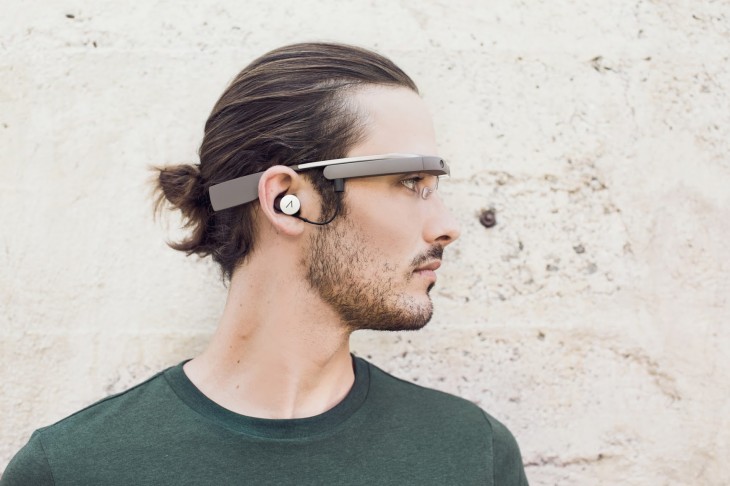 Gadgets in this category are slowly emerging but still haven’t hit the mainstream yet. Google Glass has been available by invite-only for over a year and there still isn’t a public release in sight (despite all of the crazy rumors about showrooms on barges).
Gadgets in this category are slowly emerging but still haven’t hit the mainstream yet. Google Glass has been available by invite-only for over a year and there still isn’t a public release in sight (despite all of the crazy rumors about showrooms on barges).
Meanwhile, Samsung blurred the lines of wearable computing and smart watches by throwing itself into the ring before any of the other big companies. Despite being first to the party, the company still managed to launch a dud with the Galaxy Gear.
Winner: Google Glass
There are very few entrants in the wearable computing category right now, but Google Glass is clearly the leader in this space. The company launched version 2 in October, which is unfortunately still invite only (but you might be able to find an invite if you loiter over on Reddit long enough).
Glass has been constantly improving and received many updates during 2013, unlocking new features such as the ability to wink to take photos. Additionally, the ecosystem is quickly growing around the device now that the company has finally shipped the mirror API for Glass.
Next: Consoles
Consoles
 Although Nintendo technically launched the new console generation with the Wii U late last year, 2013 marked the a true new beginning for the market. Not only is there a new Xbox and a new PlayStation, there’s also a low-cost Android console named Ouya as well as Valve jumping into the ring with its recently announced Steam Machine and Steam OS platform.
Although Nintendo technically launched the new console generation with the Wii U late last year, 2013 marked the a true new beginning for the market. Not only is there a new Xbox and a new PlayStation, there’s also a low-cost Android console named Ouya as well as Valve jumping into the ring with its recently announced Steam Machine and Steam OS platform.
Winner: Xbox One
The Xbox One came out as a strong competitor. While it is slightly shadowed in terms of power by the PS4, the ecosystem Microsoft has built around the console is well thought out and covers everything from music to movies and games.
If you have a Windows PC, you’re finally going to have that end-to-end experience that Apple users have been raving on about for years. By installing the Smartglass applications on your Windows, iOS or Android device, you’re able to interact with the console and gain an extra screen for maps and other information that you wouldn’t otherwise have.
 When we reviewed the Xbox One, we called it a “multimedia extravaganza” that does more than just play games. Kinect, the motion controller for the Xbox is the most compelling part of the console, allowing you to turn the console on or off, control the TV and interact with games on a whole new level. On top of that, you’ve got applications like Skype that can be snapped to the side of the TV while playing games.
When we reviewed the Xbox One, we called it a “multimedia extravaganza” that does more than just play games. Kinect, the motion controller for the Xbox is the most compelling part of the console, allowing you to turn the console on or off, control the TV and interact with games on a whole new level. On top of that, you’ve got applications like Skype that can be snapped to the side of the TV while playing games.
The PS4 on the other hand launched with issues that degraded the experience for many and lacked much depth outside of the launch games and a handful of streaming services. Overall, if you’re only interested in gaming, the PS4 is well equipped to do the job with extra useful features such as the ability to stream directly to Twitch and take screenshots in-game.
Unfortunately, the platform itself needs time to be built out and lacks the rich ecosystem that Microsoft has built since almost every customer likely already has a PC in their home. That said, the PlayStation 4 has much better specifications than the Xbox One, so over time it’s likely that this story could change as Sony adds features such as the Gaikai cloud for streaming PS3 games in 2014, a feature that the Xbox One lacks altogether.
Sony says that the PS4 sold 2.1 million units in the first few weeks following the launch and Microsoft sold 2 million units in the same period despite also experiencing issues with faulty disc drives. The war for the living room is going to be tight and there’s no way to say how it’ll turn out in the long run, but Microsoft may edge out the PS4
Runner up: PS4
Ones to watch in 2014: Ouya, Steam Machine
Next: Smartphones
Smartphones
 Every year there are more smartphones released than the year before it and 2013 was no exception. Notable phones in 2013 included the HTC One, Motorola X/G, Lumia 1020, Sony Xperia Z, LG Nexus 5, BlackBerry Z10, Samsung Galaxy S4 and iPhone 5s/5c.
Every year there are more smartphones released than the year before it and 2013 was no exception. Notable phones in 2013 included the HTC One, Motorola X/G, Lumia 1020, Sony Xperia Z, LG Nexus 5, BlackBerry Z10, Samsung Galaxy S4 and iPhone 5s/5c.
BlackBerry re-entered the market in early 2013 with its new phone the Z10, running the long-heralded BlackBerry 10 OS. Despite it being a beautiful phone with an OS that is laden with new concepts, it hasn’t done well in a crowded market filled with cheap Android phones and the company is still in trouble.
Then came the HTC One and Samsung Galaxy S4 which were released around the same time and were quickly duelling for the spot of king, with the HTC One being commonly reviewed as the best HTC handset ever made. Despite this, the S4 still bested it in sales, in part due to Samsung’s monolithic marketing budget.
When we reviewed the two head-to-head, we found that the S4 edged the One out ever so slightly, mostly down to the lackluster camera that HTC chose to put in the One. Perhaps the most interesting move by Google this year was persuading HTC and Samsung to build “Google Edition” versions of the phones, which come with no added software or skins and allow users to receive updates much sooner than they would with the regular retail editions.
 Nokia announced its most impressive phone yet in July — the Lumia 1020 — which was the first Windows Phone device to be graced with true PureView camera technology (which had previously been shackled to a Symbian based handset, the 808 PureView). Heralded as the best camera on the market, the Lumia 1020 did well but was a bit too chunky for most and required commiting to a platform that doesn’t have many popular apps, like Snapchat.
Nokia announced its most impressive phone yet in July — the Lumia 1020 — which was the first Windows Phone device to be graced with true PureView camera technology (which had previously been shackled to a Symbian based handset, the 808 PureView). Heralded as the best camera on the market, the Lumia 1020 did well but was a bit too chunky for most and required commiting to a platform that doesn’t have many popular apps, like Snapchat.
Amazingly, the most popular Windows Phone in 2013 was the Lumia 520, a low-cost device that competes with many tacky Android handsets at a very compelling price point (often free with a contract).
Sony also regained its mojo this year, releasing the Xperia Z, a 5-inch, 100% waterproof phone that is capable of being treated rough and that doesn’t look hideous. The device was well received but came out at a time when most attention was focused on the S4 and One.
Google’s acquisition of Motorola also finally bore fruit this year, with the company releasing the Motorola X. A world first due to the customizable nature of the phone, it also featured powerful new voice technology, such as the ability to wake the phone and search with only voice as well as some sort-of-creepy features that listen to the user’s surroundings to aid interactions with the phone. The company also introduced a lower-cost phone that has gained a lot of traction and is doing exceptionally well outside of the US, the Moto G.
Google also released a major new handset in 2013, the Nexus 5. When we took a look at it, we thought it was a “a near-perfect fusion of Android hardware and software.” For the price, it’s hard to best the Nexus 5 in the Android world since the stock Android experience is far superior to skinned phones.
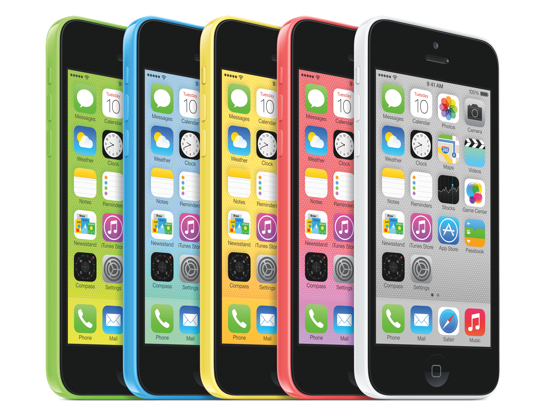 Finally, Apple had a big year in 2013, releasing two new flagship phones — the iPhone 5s and 5c — the first, a successor to the iPhone 5 and the 5c as an alternative for those not wanting to buy the latest and greatest at full price.
Finally, Apple had a big year in 2013, releasing two new flagship phones — the iPhone 5s and 5c — the first, a successor to the iPhone 5 and the 5c as an alternative for those not wanting to buy the latest and greatest at full price.
Apple’s new fingerprint sensor technology ushered in biometric security for all, making unlocking the iPhone a cinch. Along with iOS 7, the company replaced the option of buying the previous year’s phone with a choice between the 5c and the 4s.
Winner: HTC One / iPhone 5s
It’s hard to simply choose a winner for the smart phone category since there are just so many choices. The HTC One stood out as one of the best handsets of 2013 and helped save the company from losing almost all of its market share. It was the first time that any company had delivered iPhone-quality hardware to Android handsets and had also pulled off skinning the software in a way that was useful instead of cumbersome.
The iPhone 5s was just as impressive and is regarded as the best iPhone yet. With the very first fingerprint sensor that works (almost) seamlessly and the visually updated iOS 7, it sold over 9 million handsets in the first weekend, which made it very hard for customers to actually get one, at first. Despite the handset otherwise only seeing marginal updates, such as a small camera enhancement, it continued to be out of stock in many countries until this month. Apple still hasn’t lost its mojo.
Runner up: Lumia 1020 / Motorola X & G / Nexus 5
One to watch in 2014: Jolla
Next: Tablet PCs
Tablet PCs
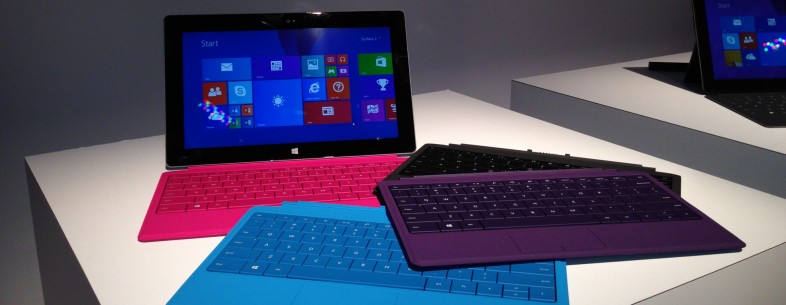 2013 was the year of the tablet, with devices exploding from almost every manufacturer one can imagine. Thanks to Microsoft’s aggressive touch strategy, almost every manufacturer that builds PC hardware also tried their hand at building a tablet, and Microsoft launched the sequels to its own Surface tablets.
2013 was the year of the tablet, with devices exploding from almost every manufacturer one can imagine. Thanks to Microsoft’s aggressive touch strategy, almost every manufacturer that builds PC hardware also tried their hand at building a tablet, and Microsoft launched the sequels to its own Surface tablets.
Apple released two major tablet updates in 2013; the new iPad Air, which was simply an iPad that shed a lot of the weight and bulk of the previous full-size device, and the iPad Mini, which gained a Retina display, making it one of the best devices on the market for reading.
In the Android space, Google’s second-generation Nexus 7 was one of the most popular and best reviewed Android tablets, mostly attributed to the price and the fact that it competes directly with the iPad mini. It features a beautiful screen — which is higher resolution than that of the iPad — and updated specs which means it flies through any task. Samsung’s Galaxy Note 3 also sold 10 million devices in just two months which is an impressive feat.
Winner: Surface Pro 2
We’d choose the Surface Pro 2 to win this section in a heartbeat; it’s the perfect combination of work and play, fixing many of the issues with the original Surface while retaining the parts we love. Having the full version of Windows available on the go is extremely powerful and the 10.1-inch form factor makes it convienient for taking almost everywhere. Windows 8.1’s release this year makes that even more compelling, since the apps have just gotten even better since release.
For 2014, we’re wishing that Microsoft will put it on a diet and squish it into a similar form factor as the Surface RT, but time will tell.
Next: Smart watches
Smart watches
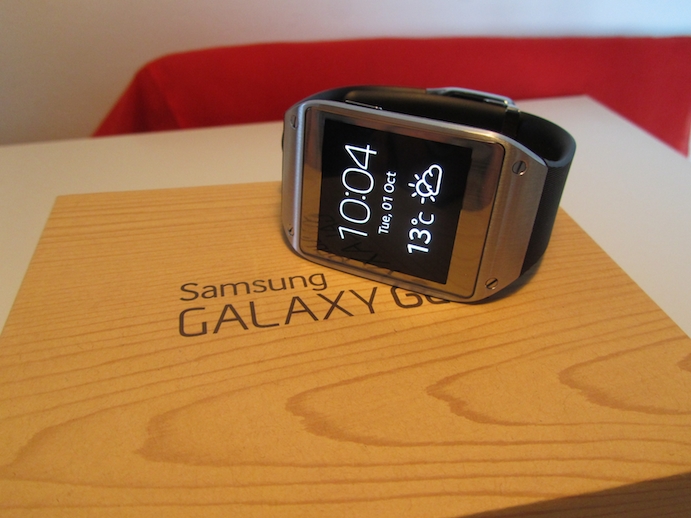 This is a market that’s been surprisingly slow, despite being predicted to take off this year. Wearables are the hot topic, as we’ve seen with devices such as Fitbit’s Force, but many of the major players are yet to emerge in this space.
This is a market that’s been surprisingly slow, despite being predicted to take off this year. Wearables are the hot topic, as we’ve seen with devices such as Fitbit’s Force, but many of the major players are yet to emerge in this space.
Samsung released its Galaxy Gear watch, which was a received with a tremendous “meh” from the world. The device was rushed and didn’t do anything particularly well, especially considering that it requires a Samsung smartphone to be used. Sales were disappointing, since the device leaves much to be desired. In our review, we liked the device but it certainly left much to be desired.
Unlike the Galaxy Gear, the Pebble — which started with a Kickstarter campaign late last year — shattered many expectations, raising $10 million in 30 days. The device was finally made available for general purchase this year and has seen many applications quickly build out to support it.
There have been other recent entrants too; the smart watch concept is extremely popular on Kickstarter with many others trying their hand at gaining as much money as Pebble has.
Winner: Pebble
The Pebble wins this category as it’s the only device that users have embraced and thinks about the smart watch differently, rather than just attempting to jam a smart phone onto the wrist. Pebble’s use of E-Ink helps the device last much longer without a charge and its wide range of apps and support for phones makes it much more useful than Samsung’s Galaxy Gear.
Next: Smart home electronics
Smart home electronics
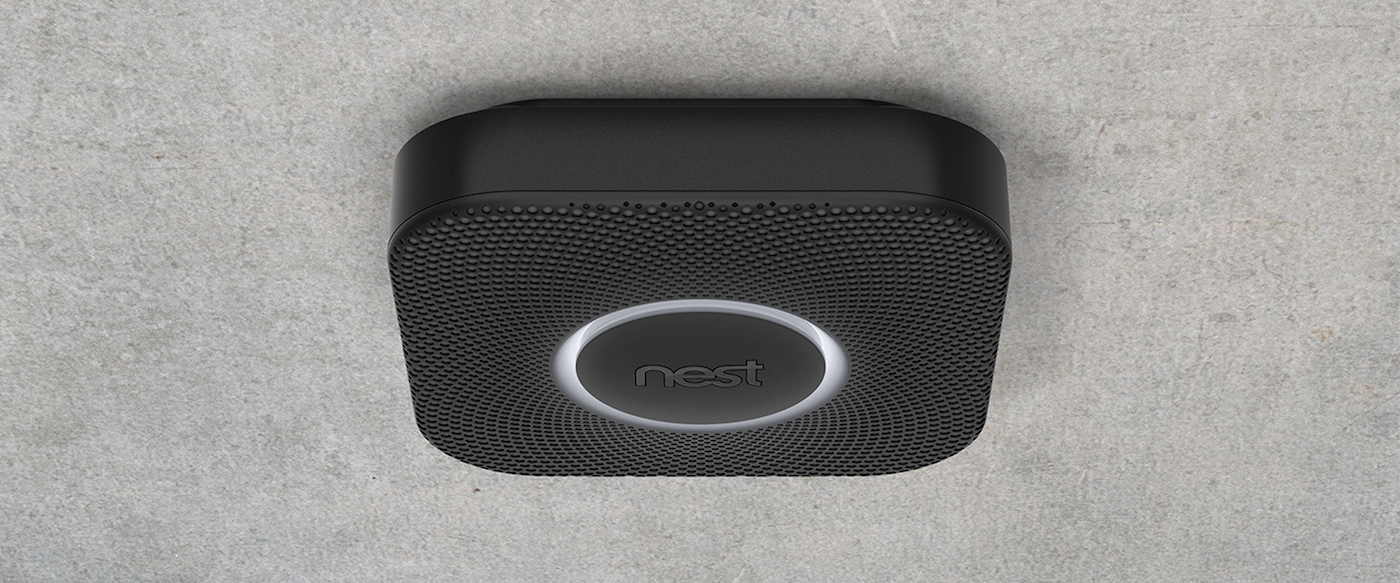 A number of new innovations began emerging in this space in 2013, with new devices such as the Lockitron that updated the lock on your house to be unlockable with your phone, and expansions to Philips’ Hue range that allows lighting control from your phone, and Nest’s new smoke alarm that aims to do away with those unintelligent traditional smoke alarms.
A number of new innovations began emerging in this space in 2013, with new devices such as the Lockitron that updated the lock on your house to be unlockable with your phone, and expansions to Philips’ Hue range that allows lighting control from your phone, and Nest’s new smoke alarm that aims to do away with those unintelligent traditional smoke alarms.
Winner: Nest Protect
Nest had already revolutionized the thermostat, but the company came back in 2013 to transform the humble smoke alarm too. The Nest Protect is the world’s first smart smoke and carbon monoxide detector that can alert where the issue in the home is before an alarm sounds so that the occupants can put out a fire before it grows. It even glows in the dark to help you walk around the house in the night, and it can be silenced with a gesture of your hand rather than having to flap a newspaper or magazine around underneath it.
Next: Entertainment
Entertainment
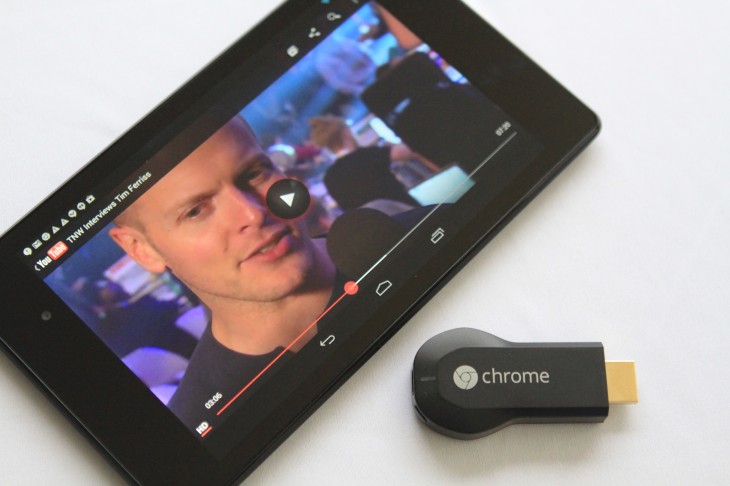 Notable releases in the entertainment space this year included devices such as the Oculus Rift, which allows consumers to experience immersive virtual reality for themselves at a reasonable price for the first time. Yet another Kickstarter project, Oculus raised $75 million for its next generation headset and has started a publishing arm to release games for the device.
Notable releases in the entertainment space this year included devices such as the Oculus Rift, which allows consumers to experience immersive virtual reality for themselves at a reasonable price for the first time. Yet another Kickstarter project, Oculus raised $75 million for its next generation headset and has started a publishing arm to release games for the device.
The Leap Motion controller also entered the market this year via Kickstarter, bringing Kinect-like functionality to the PC in a tiny form factor for a very low price. It was greeted with huge success and an ecosystem of apps is quickly building around it.
Winner: Google Chromecast
When Google announced Chromecast, it caught many by surprise. The company had been lacking an AirPlay competitor for years and finally had a solution which only costs $35! It’s a simple way for Android users to quickly show content on their TVs and comes at a price that can’t be beaten.
Runner up: Oculus Rift
Into the future
2014 holds a lot of promise. We’re expecting to see some crazy things like the Motorola Project Ara modular phone come to life and Google to release Glass to the masses. Form factors are quickly changing and it’s hard to believe all of these great devices were released in 2013!
Hold tight, it’ll be a wild ride!
Image credit: GLENN CHAPMAN/AFP/Getty Images
Get the TNW newsletter
Get the most important tech news in your inbox each week.
